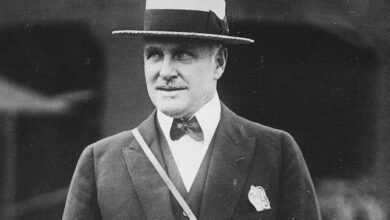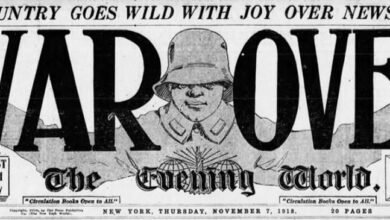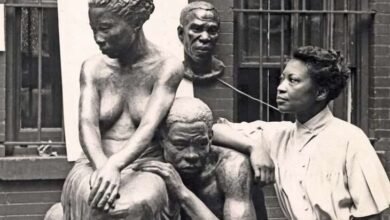Moses Smith and FDR: A Lifelong Friendship


 Moses Smith was a lifelong Democrat who lived in Hyde Park, in Dutchess County, New York, which at the time was a Republican bastion.
Moses Smith was a lifelong Democrat who lived in Hyde Park, in Dutchess County, New York, which at the time was a Republican bastion.
Smith was a tenant of Franklin Delano Roosevelt, living on a farm owned by FDR called Woodlawns. According to Smith’s son Clifford, the home got its name because of all the trees on its spacious lawns.
Smith became much more than a tenant to Roosevelt, however. He was somewhat of a confidant. Over the two decades they knew each other, Moses Smith acted
as a sounding board for some of FDR’s political ideas and visions.
What Roosevelt appreciated about Smith was how he did not sugarcoat his opinion. FDR found that Smith, who was active in local politics, understood the community and could convey its understanding of issues at hand.
George A. Palmer, superintendent of the Roosevelt-Vanderbilt National Historic site, spoke to Moses Smith in an interview conducted in 1948. During the interview, Smith remembered that he and Roosevelt had a conversation in 1921 in which FDR said he felt the public schools in Hyde Park were inadequate.
Roosevelt envisioned a time when Hyde Park would grow, and bigger schools would be needed. Some twenty years later while president, Roosevelt harnessed the power of the New Deal to construct three new schools in Hyde Park.
In 1924, Smith saw Roosevelt sitting on a blanket working on a speech. It turned out what Roosevelt was working on was the nominating speech for Governor
Al Smith. He read what he had to Moses Smith, to see what he thought.
Although many of the meetings between the two men were not recorded, some were remembered by witnesses. The two men came from markedly different backgrounds but looked at each other with affection.
Moses Winter Smith, unlike Roosevelt, was not born in Hyde Park. He was born across the Hudson River in Ulster County in the Hamlet of Kripplebush, located in Marbletown on October 5, 1876. He fought in the Philippine-American War (1899-1902), remaining in the U.S. Army for three years, stationed on the island of Luzon.
Shortly after he returned to the U.S., he married Harriet Wager in the Accord Reformed Church on April 10, 1906. The couple would have four sons: Arthur,
Clifford, Woodrow, and Kenneth. The Smith Family moved to Hyde Park in 1920 when they rented Woodlawns from the Roosevelts.
Where the home was located, according to LaClaire T. Wood of the Poughkeepsie Journal, was part of the estate owned by FDR on the eastern side of Route 9 and continued to what is known today as today’s 9G or Violet Avenue — named for the abundance of award-winning violets grown in the area.

 (Roosevelt’s mother owned the rest of the lands on the west side of Route 9, also known as the Albany Post Road.)
(Roosevelt’s mother owned the rest of the lands on the west side of Route 9, also known as the Albany Post Road.)
Roosevelt purchased the Woodlawns lands in 1911, and with the 194 acres came a sizeable 14-room house; before the purchase the property had belonged to Willett Bennett.
The Smith family began leasing the house on April 1, 1920, and paid $300 per month. Moses Smith noted that he always paid in cash.
Arthur Smith recalls that his father’s first meeting with Roosevelt was an eventful one. He remembered that FDR, who was not yet affected by polio, “came galloping across our field on horseback.” No one realized that he was their landlord and Moses Smith became quite angry when the horse spooked their small herd of cattle.
In another recollection, Moses Smith recalled that he first met Roosevelt shortly after signing the lease. FDR showed up one day accompanied by another individual to meet his new tenant farmer.
One of the things these two men had in common was their interest in their Dutch history. Mose, as FDR called him, remembered introducing his wife Hattie (Harriet) who was in the kitchen making crullers — a deep-fried donut-like pastry of Dutch origin.
Smith offered one of the pastries to Franklin, who was so taken with their taste that he asked Hattie for the recipe to give to Eleanor Roosevelt. A short time later, Eleanor Roosevelt arrived, pencil and paper in hand, to copy the recipe. So began a life long friendship.
Roosevelt frequently stopped by the home to have long chats with Mose about all sorts of topics, ranging from politics to farming. The Smiths farmed about ninety acres, mostly corn and also managed a herd of dairy cows and a vegetable garden.
After he became President, sometimes famous individuals would accompany Roosevelt to visit Smith – including Winston Churchill and Princess Martha of Norway.
Still later, the Smith home became a hub of Democratic Party activity in a town known for its Republican leanings. He frequently marshaled others in support of Roosevelt and his political agenda and helped get Democrats elected in Hyde Park.
His greatest achievement was organizing The Roosevelt Home Club in 1929. The purpose of these gatherings was to celebrate Roosevelt’s birthday, but once Roosevelt became president, the Home Club morphed into informal homecoming receptions for the president.
These events, sometimes held at the Smith home, typically included a brief speech by Roosevelt, and according to Smith, served as “a political springboard for his political ideas and to see what they [the neighbors] thought about it.”
Smith maintained that Roosevelt worked out some of his early ideas about a national pension, later known as the Social Security Act, while chatting with Smith. In 1932, according to the Poughkeepsie Eagle the club had over 500 members, including former governor Alfred E. Smith.
According to Smith (historians see other influences), his discussion with Roosevelt about the Wilber family (two elderly brothers and a sister) of Quaker Lane in Hyde Park helped inspire Social Security.
In Smith’s version of events, he told FDR that the oldest member of the family froze to death at the farm while his brother was in the “poor house” and their sister was in an asylum.
In an interview, Smith recalled that the President said: “Moses, this thing can’t go on; I’m going to plan someway or somehow to put over an old age security.”
The two men seemed to have a tremendous amount of respect for each other. In an interview, Mose referred to Franklin as an “honest fellow” and “honest neighbor.” It was said that Mose had an open invitation to the White House.
Roosevelt died in Warm Springs in April 1945. According to his last will, most of the Roosevelt lands were to be sold off. Clifford Smith stated that his father left the farm he rented in 1947.
Elliott Roosevelt, one of Franklin’s sons, took possession of Woodlawns converting the tenant house into five apartments to rent for income. Hattie and Moses Smith moved to 2 Market Street in Hyde Park, where they would live for the rest of their lives.
Moses Smith passed away in 1959 after a seizure at the home of one his son and was buried in Union Cemetery in Hyde Park. According to the obituary, the funeral was at St. James Episcopal Church, where the Smiths were members. He was buried in the Union Cemetery. Hattie Smith died the same year.
A year later, Eleanor Roosevelt mentioned Mose Smith in her syndicated newspaper column “My Day,” lamenting about his death the year before. She called him “an old friend of my husband and one of the best-loved citizens in the Hyde Park township.”
Unfortunately, Woodlawns was sold by Elliott Roosevelt to The N.R. Corporation of Poughkeepsie, which demolished the home in 1975.
Illustrations, from above: Moses Smith (NPS Photo); and FDR surveys a felled tree in Hyde Park (NPS).
Source link





